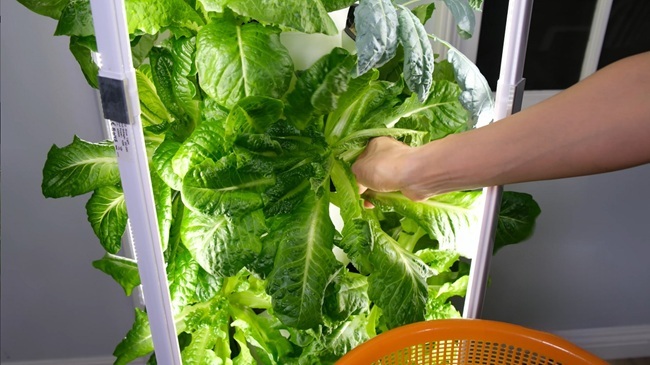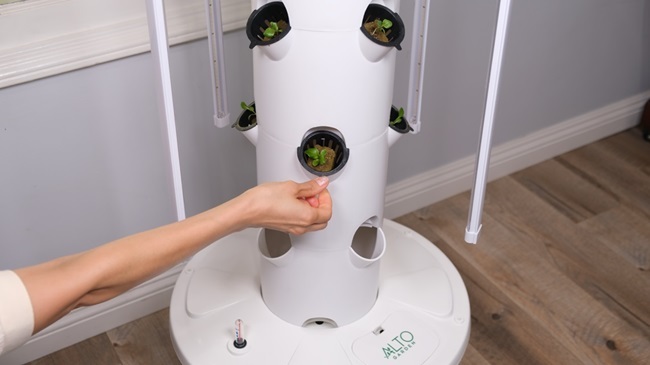Urban living has redefined the way people think about gardening. As space becomes limited and lifestyles more fast-paced, the traditional backyard garden is being replaced with smarter, more efficient solutions. Enter the vertical garden, a system designed to let anyone grow fresh produce in small indoor or outdoor spaces.
A vertical garden doesn’t just save space—it transforms the way we experience food and sustainability. Thanks to hydroponic towers, individuals can now grow vegetables, herbs, and even fruits with little effort, no soil, and minimal water. It’s a clean, efficient, and visually appealing way to garden at home.
What is a Hydroponic Tower Garden?
A hydroponic tower garden is a vertical structure that uses nutrient-rich water to grow plants without soil. Plants are placed in net pots along the tower, and water is circulated through a closed-loop system. This setup ensures optimal hydration and nutrient delivery while conserving water.
Hydroponic towers come in various sizes and designs, but the core idea is always the same—maximize vertical space to produce fresh, organic food at home. Whether you live in a small apartment or want to supplement your backyard harvest, these towers offer a clean and convenient alternative to traditional gardening.
Benefits of Hydroponic Tower Gardens
- No Soil, No Mess: The absence of soil means fewer pests, cleaner environments, and healthier roots.
- 95% Less Water Usage: These towers recycle water, drastically reducing your water footprint.
- Faster Growth: Plants grow up to 3x faster compared to soil gardening.
- More Yields in Less Space: Vertical gardens allow for more food production in minimal square footage.
Why Vertical Gardens Are the Future of Home Growing
People are turning to vertical gardens not only for their space-saving design but for their sustainability. Hydroponic tower systems are environmentally friendly and surprisingly easy to manage. Most come equipped with timers for lighting and watering, making them a set-it-and-forget-it solution.
Additionally, because you’re growing indoors or in controlled environments, your produce is often healthier. No need to worry about soil-borne diseases, pests, or unpredictable weather. Instead, you get fresh, nutrient-rich food year-round.
Popular Plants for Vertical Hydroponic Systems
- Leafy greens like lettuce, kale, and spinach
- Herbs such as basil, chives, and parsley
- Fruiting vegetables like peppers and tomatoes
- Even strawberries and cucumbers thrive in hydroponic towers
With vertical growing, your garden adapts to your space. Place your hydroponic tower in the kitchen, balcony, or even living room—it becomes a living work of art and a functional source of fresh food.

Indoors or Outdoors: Flexibility with Hydroponic Towers
One of the greatest advantages of a hydroponic tower garden is its adaptability. You can use it indoors with LED grow lights or move it outside during favourable seasons. This flexibility ensures that you can keep growing year-round without interruptions.
When grown indoors, towers rely on LED grow lights that mimic sunlight. Many towers feature built-in timers to automate light cycles, providing plants with the perfect environment without constant oversight. Outdoors, towers harness natural sunlight, making them ideal for crops that benefit from pollination, like tomatoes and cucumbers.
Features to Look for in a Vertical Garden System
- Built-in LED lighting for indoor growing
- Water recycling systems for sustainability
- Portability with wheels to move between spaces
- Food-grade material and thick walls for durability
Hydroponic towers are designed for ease of use. Many systems allow you to refill water easily, monitor levels with gauges, and adjust lighting as needed. The goal is to make gardening not only accessible but enjoyable for everyone.
Getting Started: Steps to Grow With a Hydroponic Tower
The setup for a vertical garden is straightforward, and even beginners can have success with a little guidance. Here’s how you get started with your own hydroponic tower garden:
Step 1: Germinate Seeds
Start by placing seeds in rockwool cubes and use a germination light. Within days, seedlings will begin to sprout and be ready for transplanting.
Step 2: Transfer to Tower
Once your seedlings are strong enough, place them in the net pots on your hydroponic tower. Ensure roots make contact with the circulating water inside the tower.
Step 3: Monitor Growth
Thanks to hydroponic technology, plants grow rapidly. Watch your vertical garden flourish with minimal effort. Most towers automate watering and lighting to ensure optimal conditions.
Step 4: Harvest and Enjoy
In as little as three weeks, you’ll be able to harvest your produce. There’s nothing more rewarding than picking lettuce, herbs, or fruit straight from your tower.
The Environmental Impact of Hydroponic Tower Gardens
Beyond personal health and convenience, vertical gardens offer impressive environmental benefits. Hydroponic systems use:
- 95% less water than traditional gardening
- No pesticides or harmful runoff
- Less land usage, which means preservation of green space
- Minimal waste, with efficient nutrient use and water recycling
This kind of sustainable farming aligns with global efforts to combat food insecurity, reduce agricultural impact, and empower individuals to take charge of their food sources.
Conclusion: ALTO Garden Makes Vertical Gardening Effortless
If you’re ready to grow your food organically at home, the ALTO Garden GX Tower is the perfect place to start. Designed for both indoor and outdoor use, it offers a complete hydroponic tower garden solution with 3x faster growth, 95% less water usage, and a footprint of less than one square meter. Whether you’re looking to harvest leafy greens or ripe tomatoes, ALTO Garden brings farm-fresh produce right to your fingertips—no soil, no mess, no hassle.
Experience the future of gardening with ALTO Garden—your compact, efficient, and sustainable vertical garden for every season.


